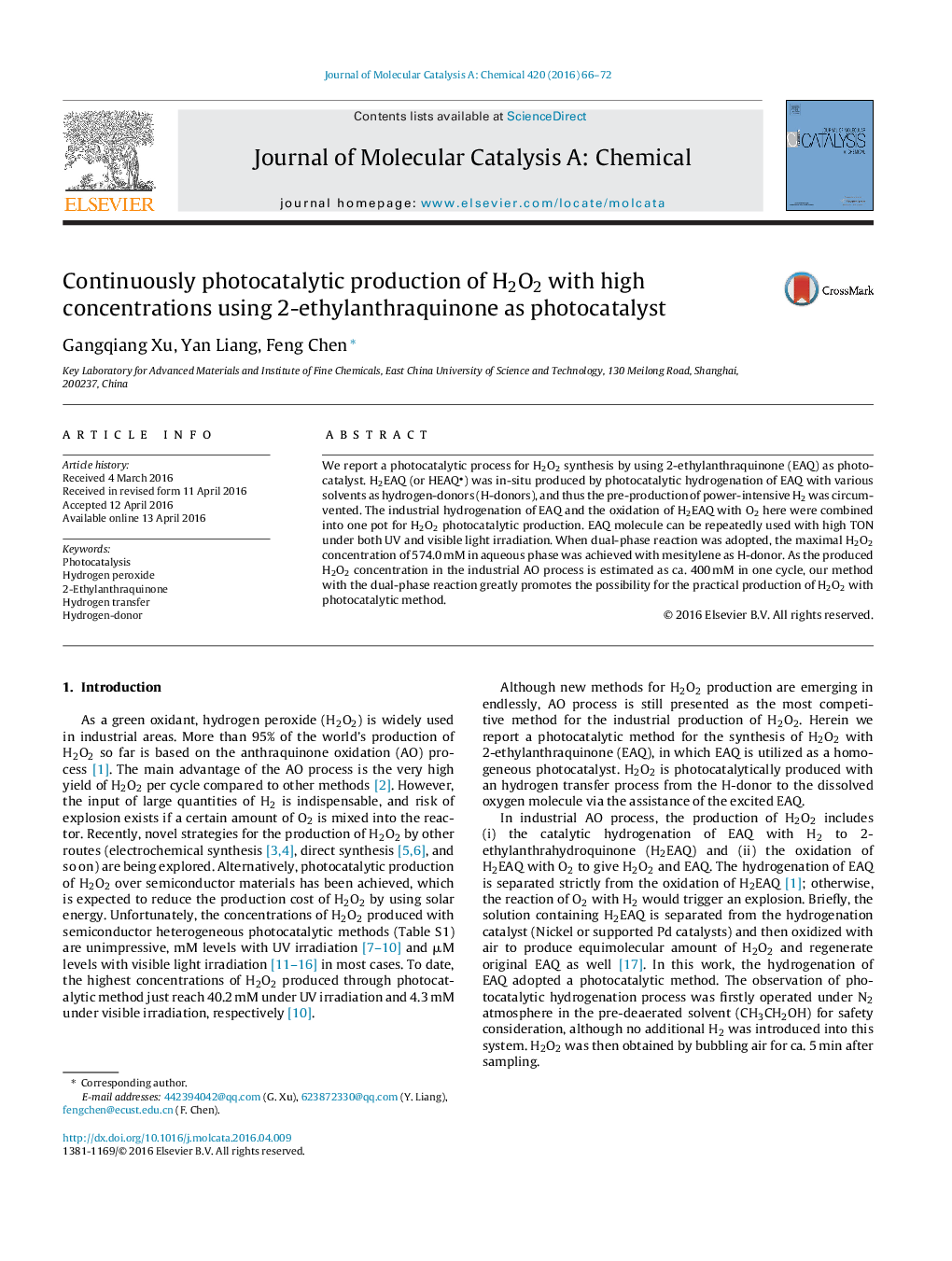| Article ID | Journal | Published Year | Pages | File Type |
|---|---|---|---|---|
| 64578 | Journal of Molecular Catalysis A: Chemical | 2016 | 7 Pages |
•EAQ is used as a photocatalyst with high TON under either UV or visible light.•H2O2 of high concentration (>500 mM) is photocatalytically synthesized.•EAQ acts as a hydrogen-carrier that transfers H from H-donors to O2 to produce H2O2.•One pot reaction for the production of H2O2 is achieved.•The chemical change of EAQ as well as H-donor during the reaction is investigated.
We report a photocatalytic process for H2O2 synthesis by using 2-ethylanthraquinone (EAQ) as photocatalyst. H2EAQ (or HEAQ) was in-situ produced by photocatalytic hydrogenation of EAQ with various solvents as hydrogen-donors (H-donors), and thus the pre-production of power-intensive H2 was circumvented. The industrial hydrogenation of EAQ and the oxidation of H2EAQ with O2 here were combined into one pot for H2O2 photocatalytic production. EAQ molecule can be repeatedly used with high TON under both UV and visible light irradiation. When dual-phase reaction was adopted, the maximal H2O2 concentration of 574.0 mM in aqueous phase was achieved with mesitylene as H-donor. As the produced H2O2 concentration in the industrial AO process is estimated as ca. 400 mM in one cycle, our method with the dual-phase reaction greatly promotes the possibility for the practical production of H2O2 with photocatalytic method.
Graphical abstractFigure optionsDownload full-size imageDownload high-quality image (163 K)Download as PowerPoint slide
